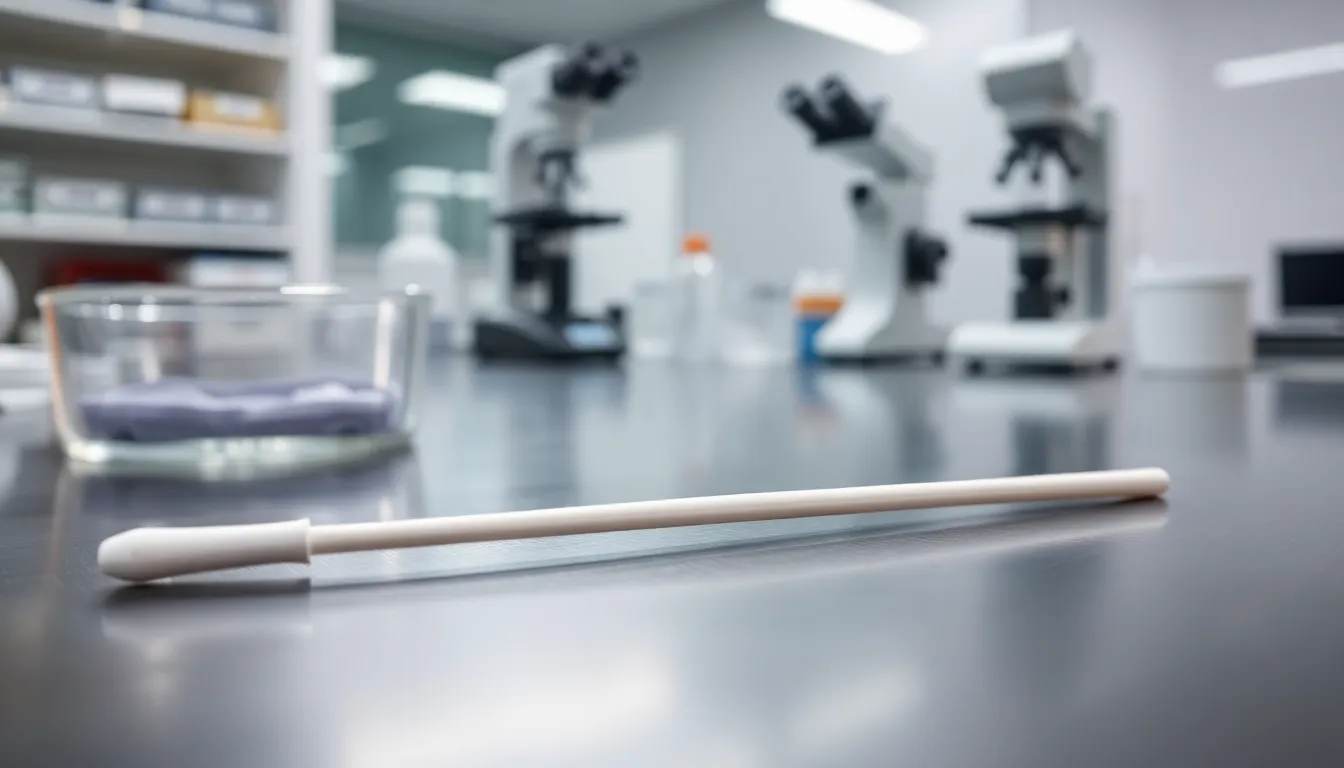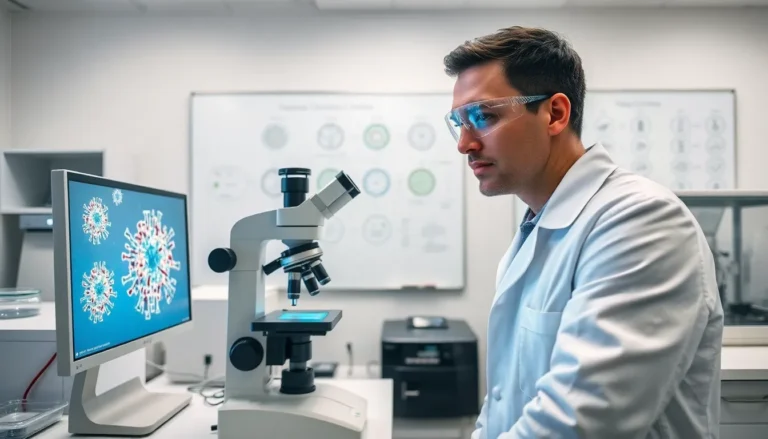Table of Contents
ToggleWhen it comes to diagnosing viral infections, the viral culture swab takes center stage, a crucial tool in the medical kit that brings a touch of high-tech flair to your healthcare experience. Picture this: you visit the doctor, intending to learn if that pesky sore throat is caused by a run-of-the-mill virus or something that requires your local pharmacy’s finest. Enter the viral culture swab with its dramatic flair, making pathogen identification look easy. With a blend of science and a tad of suspense, let’s dive deep into the world of viral culture swabs and understand why they are as important as a good cup of coffee on a Monday morning.
What Is a Viral Culture Swab?

A viral culture swab is a diagnostic tool used to collect samples from a person’s respiratory tract, throat, or any area suspected of infection. This swab gathers cellular material from the body, which is then cultured in a lab setting to identify the specific virus causing illness. By providing a living environment, the lab can observe how viruses replicate, making it easier to determine the presence and strain of the infection. Essentially, it’s like setting up a cozy Airbnb for viruses to let them tell their story, one juicy detail at a time.
The swab itself is typically made of a flexible shaft and a material like polyester or Dacron. Unlike traditional cotton swabs, these materials don’t inhibit viral growth, making them ideal for the task at hand.
Importance of Viral Culture Swabs in Diagnostics
Viral culture swabs play an indispensable role in diagnostics, especially when it comes to identifying viral pathogens. In a world where the wrong diagnosis can lead to mismanagement of treatment, having accurate information about the exact virus at hand is crucial. Not only do these tests help clinicians prescribe the right antiviral treatment, but they also provide insights into whether particular outbreaks could lead to broader public health concerns.
Besides, viral cultures enable researchers to study viral behavior and mutations. This information is invaluable for vaccine development and for preparing responses to emerging viral threats. In essence, the viral culture swab isn’t just a tool: it’s a bridge connecting current medical practice with the evolving landscapes of viral research.
Types of Viral Culture Swabs
There are several types of viral culture swabs, each tailored to specific needs. Here are the most common types:
- Nasopharyngeal Swabs: These swabs collect samples from the upper respiratory tract, often used for testing influenza and respiratory syncytial virus (RSV).
- Throat Swabs: Specifically designed for throat infections, these swabs help in diagnosing viruses like strep throat.
- Oropharyngeal Swabs: Targeting the mouth and throat, these are often utilized to identify viruses that affect the oral cavity.
- Vesicular Swabs: These are taken from blisters or lesions, useful for diagnosing viruses like herpes simplex.
Each type has unique applications, but they all serve a common purpose: accurately identifying viral infections for effective treatment.
How to Collect a Viral Culture Swab
Collecting a viral culture swab may sound daunting, but it is straightforward and can often be done in a matter of minutes. The following steps outline the typical procedure:
- Preparation: The healthcare provider should wear appropriate personal protective equipment (PPE) and explain the procedure to the patient to minimize anxiety.
- Sample Collection: Using a viral culture swab, the healthcare provider inserts the swab into the patient’s nose or throat, ensuring to gather enough cells from the area. For a nasopharyngeal swab, the swab should go deep into the nasal passage to ensure a proper sample.
- Sealing and Transporting: After the sample is collected, it is placed in a sterile container and sent to the laboratory immediately to avoid degradation.
It’s important that this process is performed by a trained professional. Incorrect collection can lead to inadequate samples, rendering the test less effective.
Interpreting Viral Culture Results
Interpreting results from a viral culture can be a delicate balancing act requiring expertise and experience. Generally, results can be categorized as positive or negative. A positive result indicates the presence of a virus, while a negative result suggests that no virus was detected in the sample provided.
But, it’s critical to remember that a negative result doesn’t always mean there’s no infection. It can simply indicate that the virus was not present in sufficient quantities for detection or that the specimen was not collected correctly. Also, results often come with a timeframe, as some viruses may be detectable only during specific phases of an infection.
Eventually, the interpretation of these results should be done along with the patient’s symptoms and medical history to provide a comprehensive understanding of their health status.
Common Uses of Viral Culture Testing
Viral culture testing is employed in various medical scenarios, each vital for effective diagnosis and treatment. Here are some common uses:
- Respiratory Infections: Testing for common viruses like influenza or coronaviruses.
- Herpes Simplex Evaluation: Particularly for outbreaks of sores in the mouth or around the genital area.
- Rash Diagnostics: Establishing the virus behind skin lesions, such as those seen with chickenpox or shingles.
- Epidemiological Studies: Monitoring outbreaks and tracking virus mutations over time.
Each application contributes to a deeper understanding of viral infections and their management, making viral culture testing an essential part of modern medicine.
Limitations and Considerations
While viral culture swabs are powerful tools, they do have limitations. They typically take several days to yield results, which can be problematic for conditions requiring immediate treatment. Also, not all viruses can be cultured: some may need alternative testing methods.
Another consideration is that the procedure can be uncomfortable for patients, especially nasopharyngeal swabs, leading to a reluctance to get tested even though the importance of viral diagnostics. Proper education on the importance of these tests can alleviate some concerns.
Summarizing, being aware of these limitations ensures that both healthcare providers and patients have realistic expectations about the effectiveness and timing of viral culture testing.







